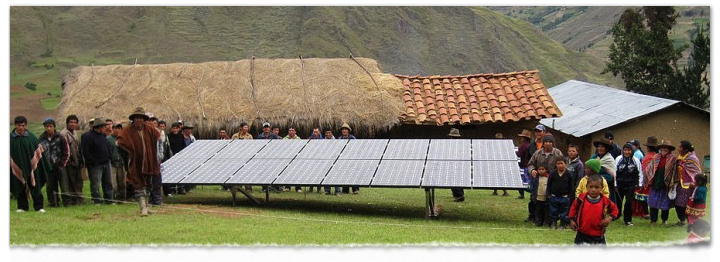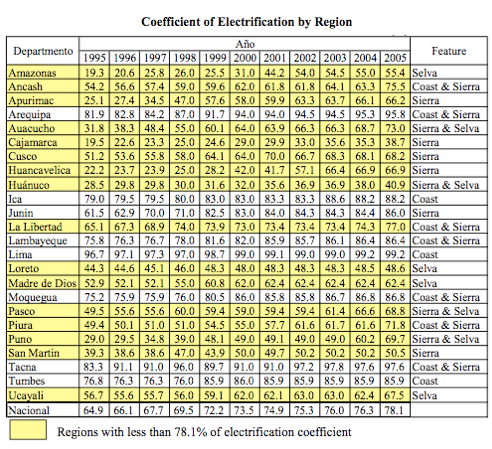
Nueva Unión
Solar installation 2010
Why Peru?
While urban regions of Peru boast a ~90% electrification rate, rural areas such as the Andes and Amazons, home to approximately one third of the country’s inhabitants, have only reached an average of 35% electrification. This represents the second lowest rate of electrification in all of Latin America; only Bolivia provides less coverage in rural regions.
Rural electrification efforts in Peru are especially challenging since many remote settlements are located great distances from more densely populated areas and have limited road accessibility. Owing in part to this isolation, many communities lack basic social infrastructure such as education, health, and sanitation services. 
Despite recent governmental reforms in the power sector, the dismal rates of rural service remain largely unaddressed. The power companies that currently hold service rights have concentrated on urban centers and their immediate surroundings and are only required to comply with new requests for electrical coverage within 100 meters of the existing grid system.
In remote areas like the Andes, where extending the pre-existing electrical grid would be incredibly costly and time consuming due to rugged terrain and great distances between communities, it is more feasible to introduce small-scale, efficient renewable energy systems such as a solar and wind power. Historically, renewable energy in Peru has been underutilized and can be exploited to a much higher degree. This is especially true in the Andes, where solar irradiation levels are high and thus very suitable for solar applications.

